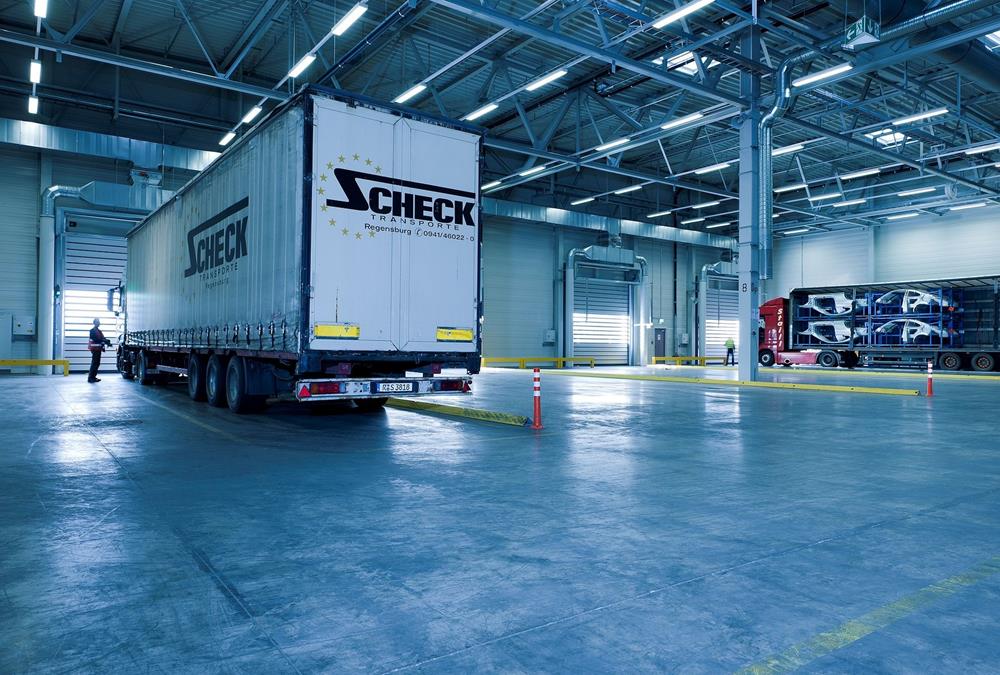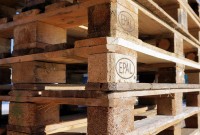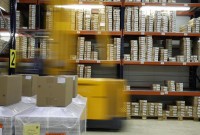- Home
- Business Processes
- Industry Knowledge
- Aerospace Industry
- Automotive Industry
- Banking Domain
- BFSI Industry
- Consumer/ FMCG Industry
- Chemicals Industry
- Engineering & Construction
- Energy Industry
- Education Domain
- Finance Domain
- Hospitality Domain
- Healthcare Industry
- Insurance Domain
- Retail Industry
- Travel and Tourism Domain
- Telecom Industry
- Leadership Skills
- eLearning
- Home
- Business Processes
- Warehouse Management
- Inbound Receiving Process
Inbound Receiving Process
When products arrive at a facility, there need to be a defined process to let them in. The process for accepting inventory when it arrives is called "Receiving". Any warehousing operation must be able to receive inventory or freight from trucks at loading docks and then stow them away in a storage location. Receiving often involves scheduling appointments for deliveries to occur, along with unloading the goods and performing a quality inspection.
Receiving (Inbound Loads)
When products arrive at a facility, there need to be a defined process to let them in. The process for accepting inventory when it arrives is called "Receiving". Any warehousing operation must be able to receive inventory or freight from trucks at loading docks and then stow them away in a storage location. Receiving often involves scheduling appointments for deliveries to occur, along with unloading the goods and performing a quality inspection. Once received, the goods then, will be brought to its short-term or long-term inventory storage location. The process should be designed in a way to generate clear instructions for each receiver to ensure they know how to receive, unpack, retrieve, pick, pack, and ship inventory.
Receiving is often done at a loading dock — a part of the facility that’s designed to make loading and unloading freight on trucks or railcars easy. In addition to unloading physical goods, receiving includes doing the paperwork and making entries to add the inventory to your records.
Receiving Process
This topic describes the warehouse handling process for inbound loads. When you order items from a vendor for delivery to your warehouse, you might want to arrange the transport of the items yourself. This topic provides an overview of how to plan the transportation and the receipt of the inbound load. The Receiving processes can happen in the following circumstances:
1. Receipts made for a PO: The PO can be received with or without an ASN created for it.
2. Receipts made without any order: The warehouse receives ASNs and receipts are made against the ASN.
3. Transfer Orders: The warehouse receives ASNs and receipts are made against the ASN.
3. Receipts made as Blind Receipts: The product arrives in the warehouse without a PO or ASN.
The following illustration shows the business process flow for planning transportation for an inbound load.
Detailed Process Steps for Receiving
|
Vendor confirms the purchase order |
Organizations issue a purchase order to vendors to confirm their orders. For each inbound load, your organization must have already issued a related sales order, and it might also contain a related load specification and/or transportation plan. The process begins when a purchase order is entered into the system and then delivered to a vendor, who confirms the order. Once the vendor confirms the purchase order or issues an Advanced Shipment Notice (ASN), organization should plan for transportation and receipt of the inbound load. |
|
Preregistration (ASN) |
Suppliers might share information about products that will be shipped. Now a days, Suppliers can provide this product information electronically through an Advance Shipment Notice (ASN) that is then automatically recorded in the receiver entity's warehouse management system. The information in the ASN includes the quantity of products that will be shipped and the date when they will be shipped. The ASN might also include information such as batch or serial numbers. This advanced information can be used to preregister the products before the products are received. By preregistering products, organization reduces the amount of work that is required during item registration and receipt at the warehouse. |
|
Manage Transportation |
Next step is to work with your transportation agency to confirm the shipping rate, route, and shipping carrier. |
|
Create Inbound Load Record |
Load information including the contents of the load is created at the warehouse to plan the arrival. The inbound load record represents a vendor shipment of one or more purchase orders. The load is expected to arrive at the warehouse as one physical transportation unit (such as a truckload). The inbound load record is used for planning purposes and lets the logistics coordinator track the load's progress from the vendor. It's also used to register order line quantities and manage progress through warehouse operations, such as arrival and put-away work. |
|
Vendor Confirms the Load Dispatch |
Inbound load is confirmed once shipment details are received from the vendor. When the vendor dispatches the load, the logistics coordinator at the receiving warehouse confirms the load shipment. |
|
Arrival of the Load |
Plan when to receive the load from a vendor at the inbound dock. Load will arrive and warehouse workers will unload and check the quantities. Quantities are updated against the planned quantities. |
|
Product Registration |
When products arrive, they are first marked as Registered. Product receipt registration often occurs at the inbound docks in a warehouse. It’s performed either by using a hand-held device or through arrival journals. In this step the products are marked as Registered, but please note that the products have not yet been marked as Received. The products might then go through additional processes, such as quality management, before they are finally marked as Received. |
|
Quality Inspection |
Products that are received in a warehouse might go through quality inspection before they are put away into inventory. Quality inspections are typically done by a quality clerk. When a purchasing agreement is made with a vendor, it will define the characteristics of the product that are to be inspected and the tolerances that would be allowed. If the item is received and found to have characteristics outside those agreed upon in the purchasing contract, then the company can have the ability to return the item to the vendor. During the quality inspection processes, some of the goods might be scrapped, either because they don’t conform to the quality expectations or because the quality inspection involves destructive testing of a sample of the product. |
|
Product Receipt |
Product receipt is the process of recording that products that were ordered have been received, so that the purchase order (PO) lines can then be processed for invoicing. Information pertaining to reference to the packing slip from the supplier is captured for accounting, because it enables checks or audits of supplier packing slips against what has been received, and the accounted inventory or expense. During this step, the warehouse clerk should also account for the quantity received against ordered/registered quantity and must account for any discrepancies, such as under-delivery and over-delivery. |
|
Handle discrepancies of inbound quantities |
Under-receiving: Warehouse receiving personnel should work with supplier to acknowledge this discrepancy. Over-receiving: Over-receiving occurs when the item quantities exceed the expected quantity. Organization can define thresholds for quantity that can be received by the clerk over the expected quantity. |
|
Delivery is confirmed |
Driver check-in and check-out is registered at warehouse to complete the delivery appointment. |
|
Post the Inbound Load |
Received load quantities are posted against the purchase order for accounting and tracking. |
|
Purchase Order Status is Updated |
After the product receipt has been processed on the PO, the PO status is set to Received to indicate that the invoice can be processed for the order. |
|
Inventory is Updated |
After the load quantities have been registered as arrived, those quantities must be posted to the company's inventory ledger to record the physical stock increase. |
Related Links
You May Also Like
-
Miscellaneous Warehouse Processes
At the end of each inventory control, the Contractor provides the Ordering Person with an inventory report which contains a list of all stock adjustments. The Ordering Person uses the report to create, by use of his/her own means, necessary value and accounting adjustments related to the stock. Let us look at some to the mislaneous warehouse processes not covered earlier.
-
What is the difference between Warehouse Management & Inventory Management?
The terms “inventory management” and “warehouse management” are sometimes mistakenly used interchangeably as they both deal with operations and products of industries. Despite their few similarities, there are many notable differences between warehouse and inventory management systems.
-
Before shipping, businesses need to make sure that the items will arrive in good condition. Packaging is a form of protection against environmental threats that the product will face from the time it leaves warehouse facility until the time it reached the customer. The packaging is intended to provide protection for the item as it is being handled in the warehouse or when the item is being shipped.
-
Inventory is money, and hence businesses need to perform physical inventory counts periodically to make sure that their inventory records are accurate. The traditional approach to conducting inventory counts is to shut down a facility during a slow time of year to count everything, one item at a time. This process is slow, expensive, and (unfortunately) not very accurate.
-
At a high level, the essential elements in a warehouse are an arrival bay, a storage area, a departure bay, a material handling system and an information management system. As part of the process for enabling a warehouse layout, you must define warehouse zone groups, and zones, location types, and locations.
-
Warehouse management and distribution logistics involve the physical warehouse where products are stored, as well as the receipt and movement of goods takes place. Warehouse management aims to control the storage and movement of products and materials within a warehouse. These operations include the receipting of inwards goods, tracking, stacking and stock movement through the warehouse.
-
To stay competitive in today’s tough market, the location of your warehouse is vital. To grow retail business need to offer to customers faster and affordable shipping time, which is dependent on the warehousing location as the location of the warehouse affects the transit time to ship orders to customers.
-
Warehouses can be places where piles of packed or loose products occupy space. If left disorganized, it will become very challenging to identify products for packing or picking. Hence, proper organization of warehouse is very important. Warehouse labeling systems eliminate this problem by making sure products are easily identified and managed during the warehousing and shipping process. Labeling is the most functional and cost-effective way to keep your warehouse organized and operating efficiently.
-
Overview of Third-Party Logistics
Third-party logistics (abbreviated as 3PL, or TPL) is an organization's use of third-party businesses to outsource elements of its distribution, warehousing, and fulfillment services. A third-party logistics provider (3PL) is an asset-based or non-asset based company that manages one or more logistics processes or operations (typically, transportation or warehousing) for another company.
-
After products have been received and passed a quality inspection, they need to be stored so that you can find them when you need them. This process is called putaway. The spot where you store a particular product is called a location. One section of a warehouse might have small locations for light items; another area may have large locations on the floor for heavy items.
Explore Our Free Training Articles or
Sign Up to Start With Our eLearning Courses

About Us
Learning
© 2023 TechnoFunc, All Rights Reserved










